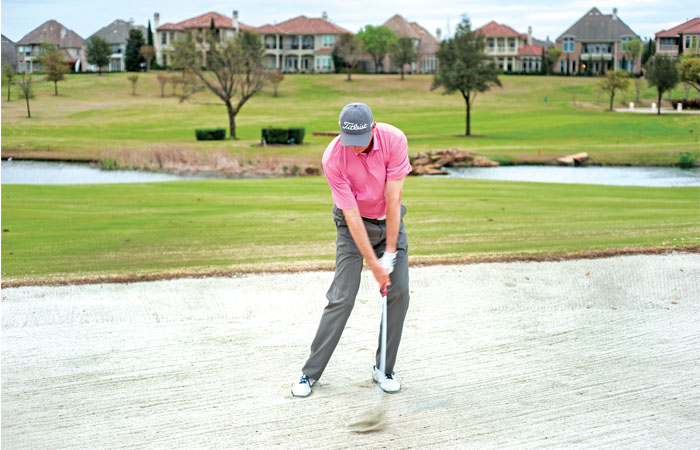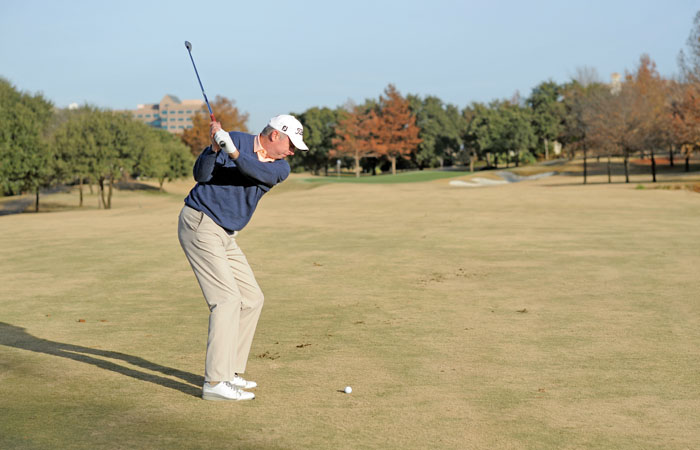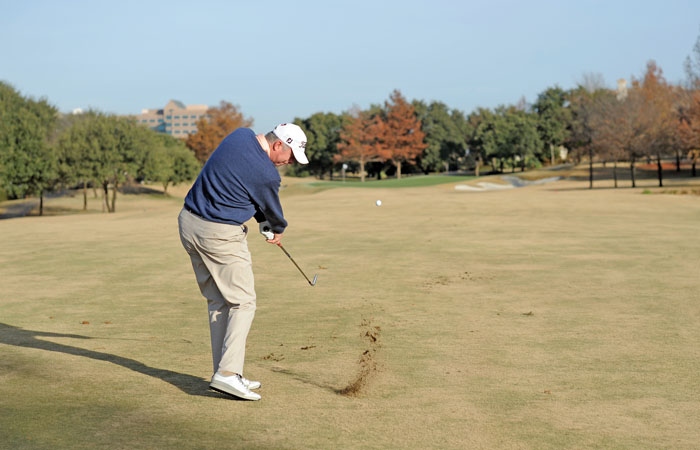So many times, I hear students say, “I hit great on the range, but I have trouble taking it to the course.” The majority of times I get on the course with students it is not a swing issue, but instead a course management issue. They don’t tee off on the correct sides of the box or pay attention to their surroundings to help them read the greens. Managing a course properly will help you shoot much lower scores, as your bad shots will be playable more often and your good shots will set you up better for the next shot.
The majority of the time, tee boxes are designed to set you up toward the trouble on the hole playing a mental game with you, so teeing off on the correct side of the box is that much more important. Tee up your ball on the same side as the trouble or where you do not want to hit on that hole; this makes it easier for you to aim away from the trouble/where you don’t want to hit. It gives you a better angle toward where you want to hit.

One of the biggest things I see on the course is students aiming wrong (right-handed golfers typically tend to aim too far right). The more right you aim, the more swing faults that come into play because you are aimed too far right. Now, to get to the nitty-gritty when you stand behind your ball and find your immediate target then walk to the ball to aim, I see so many students aim their clubface and not realize it, But they then make a slight 180-degree turn with their feet to the right, now making them aim right of their target. When you aim, make sure you start by aiming your clubface at your intermediate target and start with your feet together. Then from there, step straight out with your lead foot, rather than step out and rotate around as shown in the “nope” picture.

Paying attention to surroundings really helps green reading and knowing which way the ball will break. The ball typically will break toward water, drains you see by the green and ditches unless there is obvious contour interrupting the path.
Another simple way I like to read greens if you aren’t sure which way the putt will break is using AimPoint. AimPoint is a quick method that helps in reading greens; more than 200 tour pros have used it. Masters champion Dustin Johnson is one of the most famous tour pros that use AimPoint. He used AimPoint with his caddie to win the 2020 Masters, with a record score of 20-under par.
We won’t go through all the steps of AimPoint this month, but the shortcut example is pictured above. Stand halfway between your ball and the hole, hovering the line of your putt; look straight ahead and close your eyes; make sure you are not resting on your putter (I usually hold mine in the air, as pictured above, so I don’t rest my weight on the putter). From here, pay attention to which side you feel your weight falling to.

In the picture above, when I do this my weight goes to my left side, which means the putt will break right to left. The putt breaks toward the side your weight falls. If you do this and your weight feels even on both sides, it will be a straight putt. If you feel like the majority of your weight goes to your left side (for a right-handed golfer), then that means the putt will be a big breaking right-to-left putt. If you feel like only a little weight falls to your left side, then it will just be a small breaking right-to-left putt.